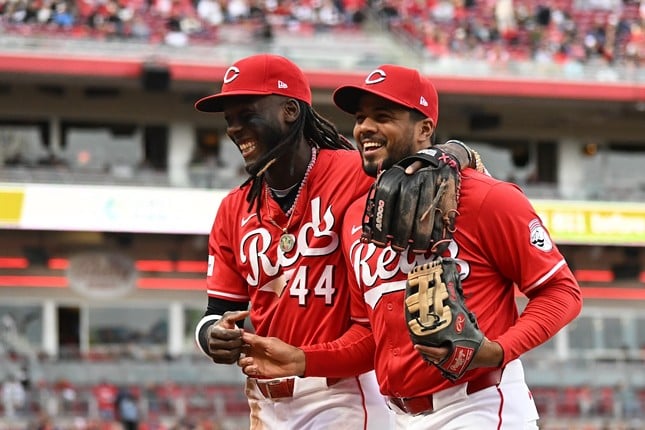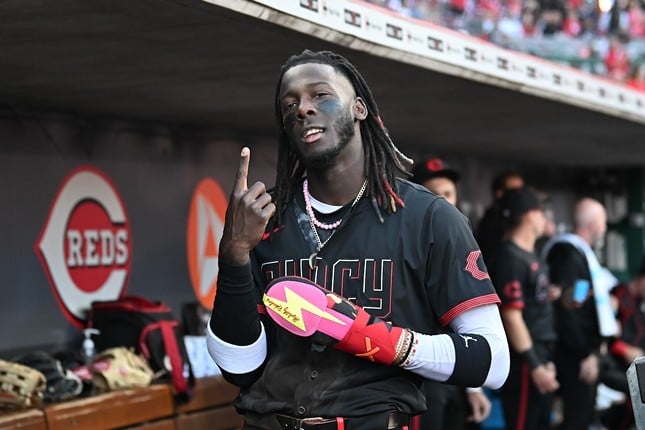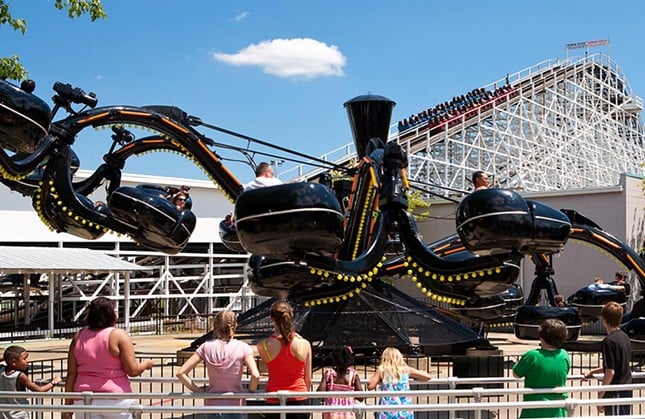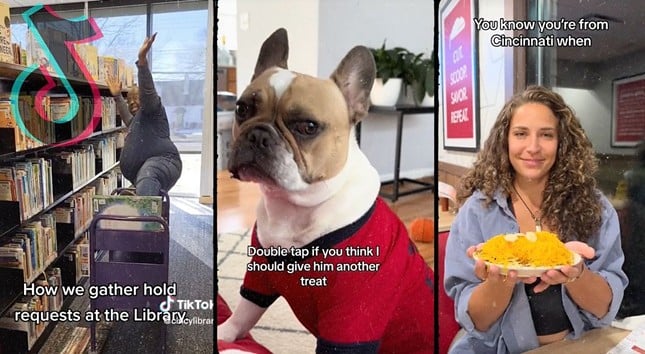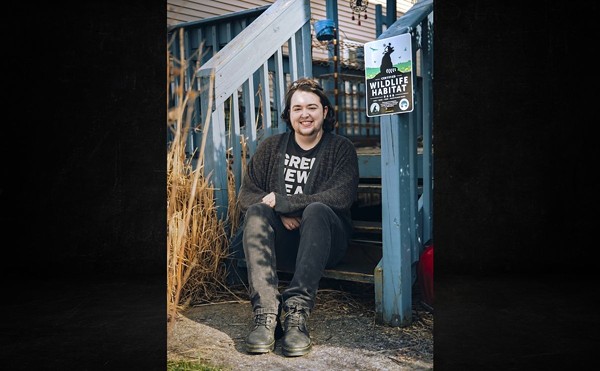A Tour of Camp Washington, Cincinnati’s Up-and-Coming Arts and Culture Hub
By CityBeat Staff on Wed, Aug 28, 2019 at 5:34 pm
Located just three miles north of downtown Cincinnati, Camp Washington, or “Camp,” as residents affectionately call it, is primarily an industrial neighborhood. Meat-packing plants dominated the area when folks of largely Appalachian descent flowed in during the 19th and 20th centuries, wooed by the prospect of work. Residents — numbered at just over 12,000 at Camp’s peak population before World War I — rose in the mornings to cross their streets to work at those same plants before heading home again. (Informative historical markers along Spring Grove Avenue pay tribute to the area’s contributions to Porkopolis, as well as the metal-working, printing and fire-fighting industries.)
Today, the face of Camp Washington has been altered by the build-out of I-75 in the 1960s, and the Mill Creek Expressway before that in the ’40s, as well as the encroachment of vacant lots and buildings every decade since. But as so often happens in well-situated urban neighborhoods blighted by exurban growth, Camp is turning a new page.
Enticed by low rent and close proximity to the city center, a number of artistic outposts have set up shop, primarily on Colerain Avenue, the main business thoroughfare — places like Wave Pool gallery, focused on community-driven creativity, and the CampSITE Sculpture Park, intent on helping reframe the way people experience their environments. And, increasingly, the Camp Washington Community Board and Center Development Corporation, established over 30 years ago, have gained traction as agents of more codified change.
Read more in our full Camp Washington Cover story.
Scroll down to view images

1 of 16
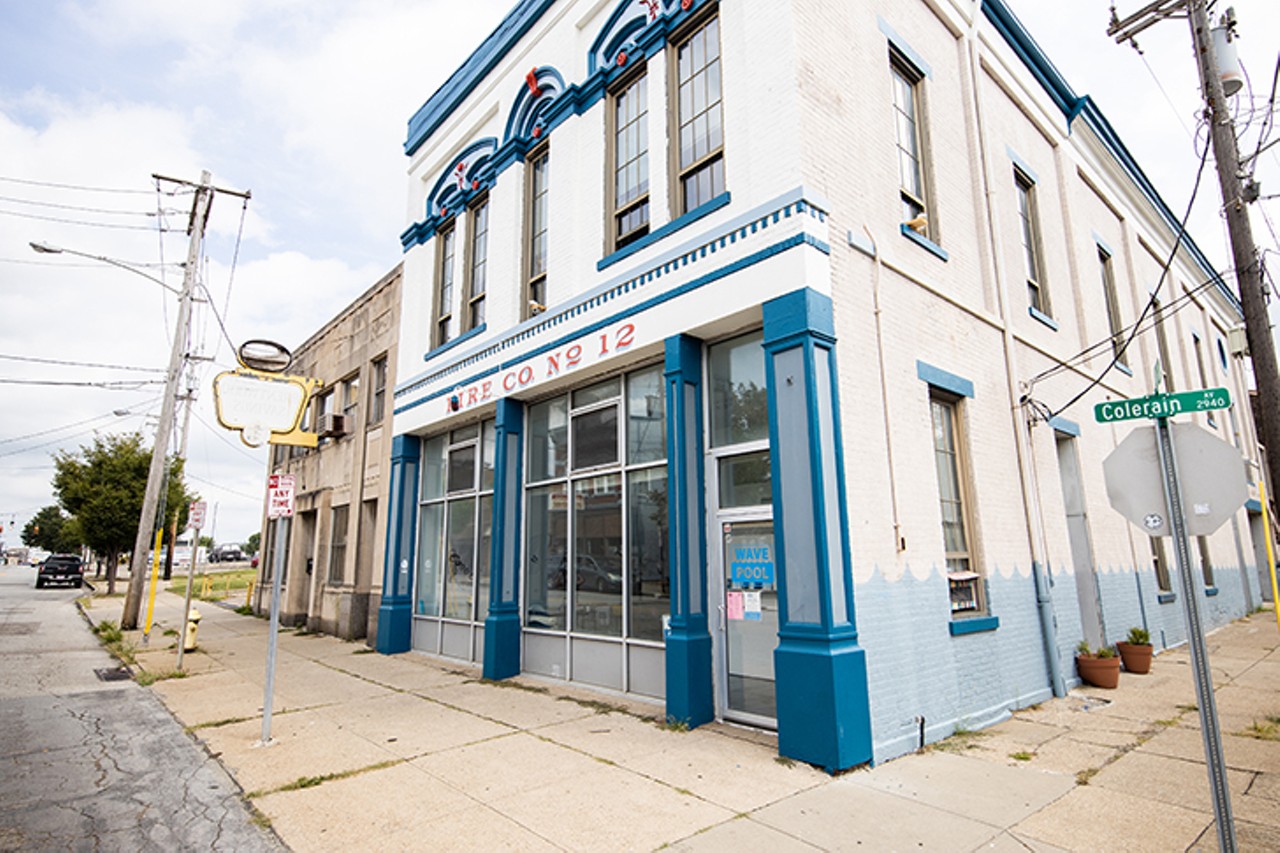
Wave Pool
2940 Colerain Ave., wavepoolgallery.orgIn 2014, Wave Pool, the community-driven, artist-led experimental art gallery, was one of the first generation of new artistic outposts to stake a claim in Camp. Situated in a repurposed firehouse, Wave Pool has become a burgeoning force for change and action in the small community. It also acts as a haven for artists-in-residence and niche exhibitions. Calcagno Cullen, executive director, says that was intentional. “Wave Pool’s mission is to pair community needs with artists’ sense of possibilities,” she says. The organization’s approach to navigating that intersection includes a Venn diagram of directives: experimental art, connecting community and creating change. Each directive comes with its own set of initiatives, ones that holistically fit both with one another and with a broader mission.
Photo: Hailey Bollinger
2 of 16
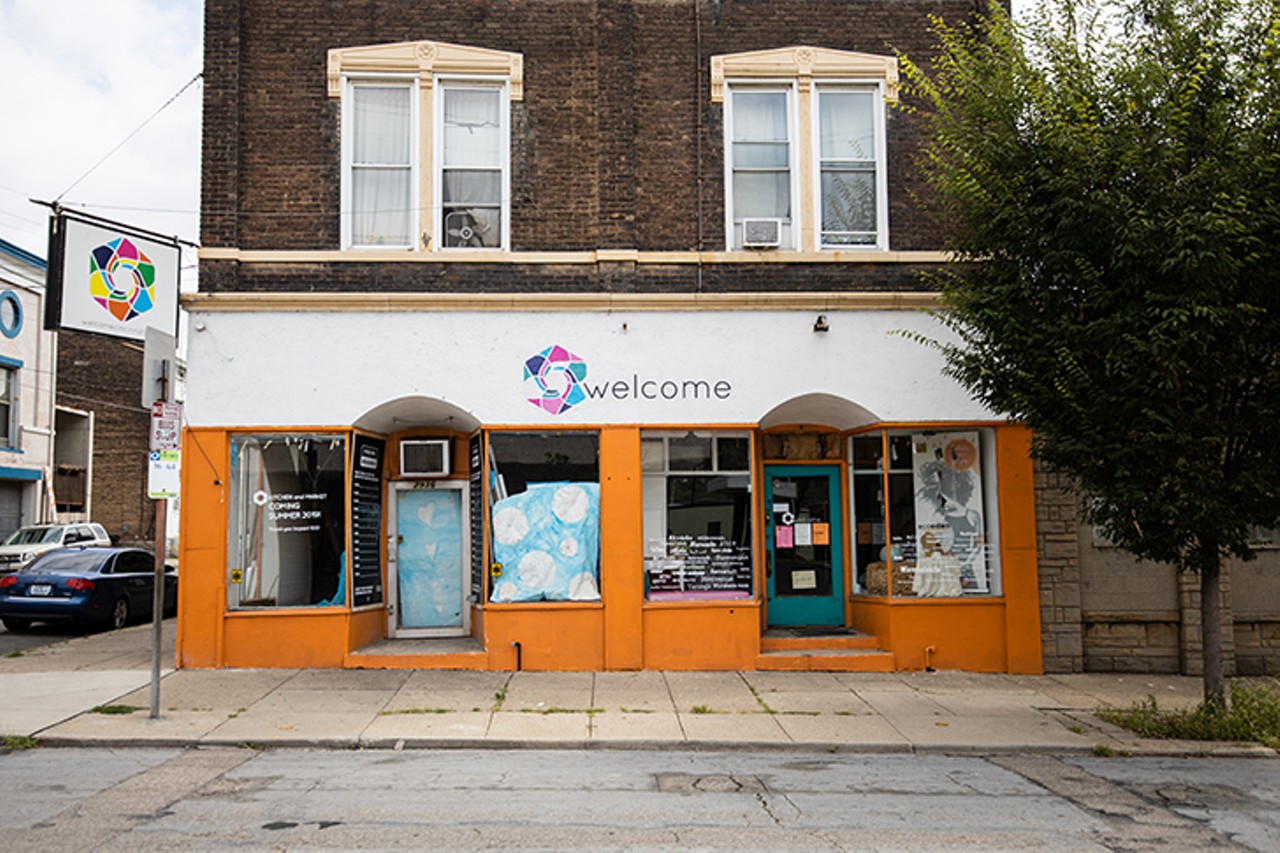
The Welcome Project
2936 Colerain Ave., welcomecincinnati.orgThe Welcome Project is a social enterprise started in 2017 by Wave Pool and the immigrant and refugee resource group Heartfelt Tidbits. Part workshop, part retail space and part cozy hangout, the Welcome Project began as a way to empower Cincinnati’s “newest neighbors” and provide a support system for recent refugees and immigrants to Cincinnati.
Photo: Hailey Bollinger
3 of 16
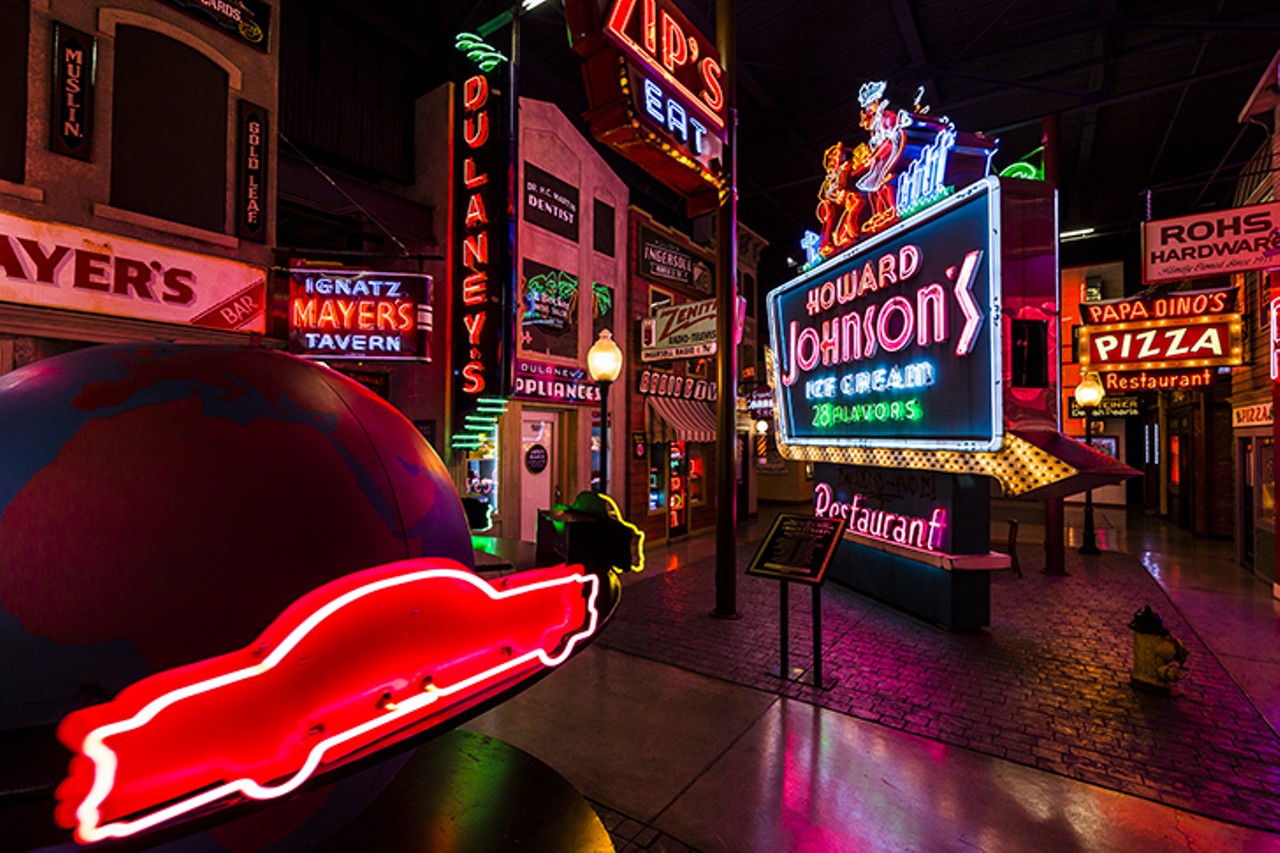
American Sign Museum
1330 Monmouth Ave., americansignmuseum.orgGet lost in the ads and landmarks of yesteryear at the American Sign Museum. Winding pathways of colorful signage give way to a mocked-up Main Street, with faux storefronts, cobblestone and giant logos from Howard Johnson, McDonald’s and Marshall Field. From roadside nostalgia and a looming Big Boy to pharmacy signs and gas station markers, the flashing lights, buzzing electricity and rotating wonders illuminate and preserve the past with a collection that encompasses signs from the late 1800s to the 1970s. The largest public sign museum in America, there’s the option to take a guided, informative tour ($15 adult; $10 seniors) to learn about the history and manufacturing process behind different signs — including many with connections to Cincinnati’s past. Or wander on your own.
Photo: Hailey Bollinger
4 of 16
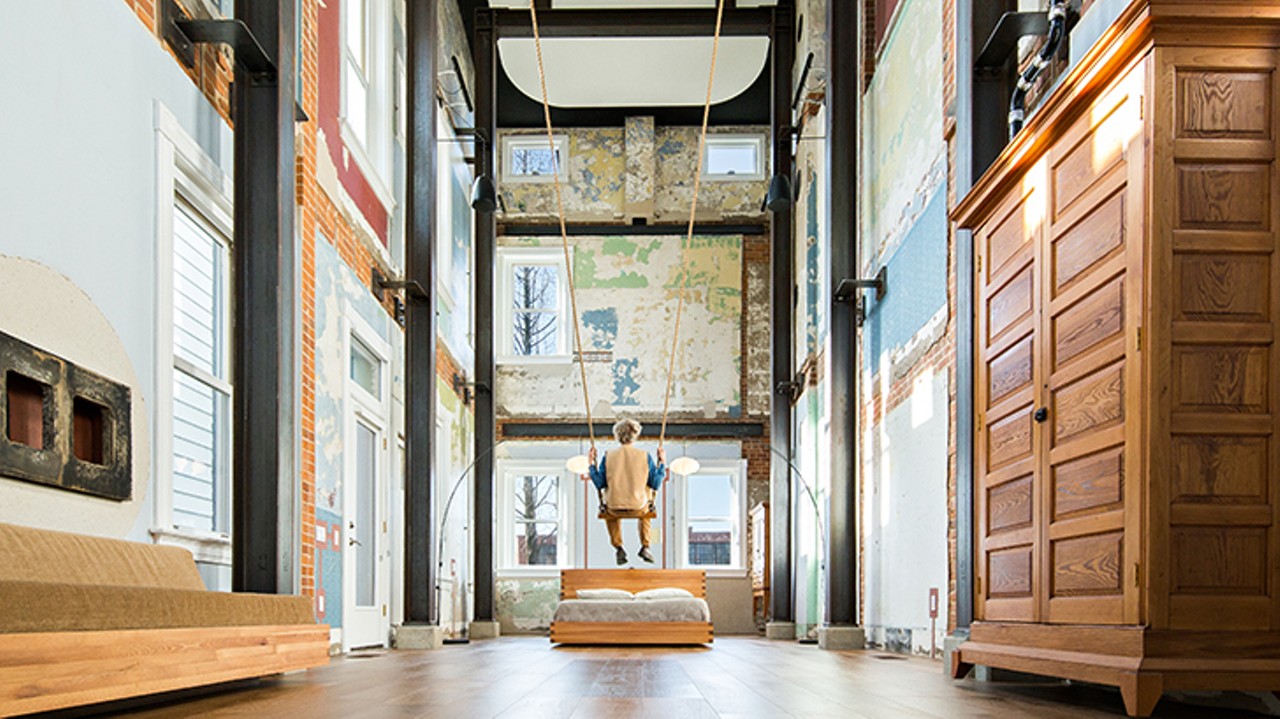
Swing House
1373 Avon Place, swing-house.comMark de Jong, a trained artist and a renovator/reimaginer of old houses, spent three years working on Swing House, a freestanding 1880s three-story residential brick building, whose location and exterior appearance wouldn’t lead passersby to expect that a major work of Contemporary art — an ambitious and unusual house-size sculptural installation — awaits inside. It is called Swing House because de Jong has removed the interior walls and upper floors and built a swing right inside. Made from reddish pine he salvaged from third floor joists, the swing is attached by 30 feet of natural-fiber rope to a newly installed metal beam on the ceiling. Today, the Swing House is open to the public the second Saturday of the month for tours and is also available to rent on Airbnb. The one-bedroom, one-bathroom home allows guests to stay in and utilize a work of modern architectural art.
Photo: Hailey Bollinger
5 of 16
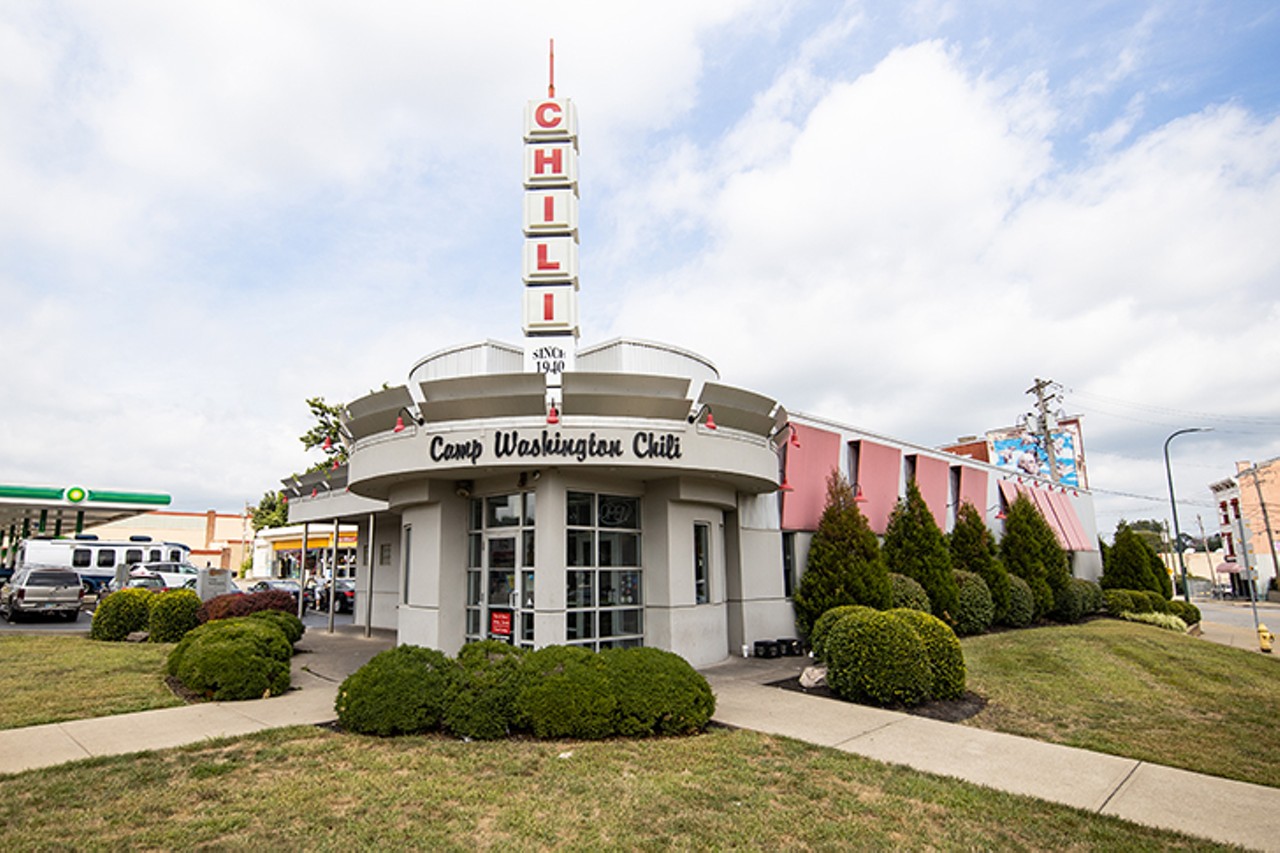
Camp Washington Chili
3005 Colerain Ave., campwashingtonchili.comThe heart of that former Camp Washington business district can be found at the intersection of Colerain Avenue and Hopple Street. There’s a Shell gas station, and stalwart neighborhood mainstay Camp Washington Chili (open since 1940) catty-corner across the street. For more than 75 years, has been serving up some of the best chili in the nation; the parlor won an “American Regional Classic” award from the James Beard Foundation. Open 24/6 (it’s closed on Sundays), it’s a retro spot to grab a 3-way or a cheese coney.
Photo: Hailey Bollinger
6 of 16

Mom 'n 'em
3128 Colerain Ave., momnemcoffee.comBuilt in 1893, the site of Mom ‘n ‘em is on the other side of Hopple Street, a bit farther down Colerain Avenue and into Camp Washington than the central cluster of burgeoning arts-related operations taking up residence in the area. Brothers Tony and Austin Ferrari are the duo behind the neighborhood coffee shop. Mom ‘n ‘em marks a return home for the brothers, both of whom live in Camp and grew up in Clifton, but its purpose is to bridge the gap between work and home. The beginnings of a renaissance in Camp Washington are invigorating for them, the artists leading the charge on the other side of Hopple serving as inspiration and motivation, and they plan on sticking around for some time. “We want to be part of that. We’re artists, too, in different ways,” Tony says.
Photo: Hailey Bollinger
7 of 16
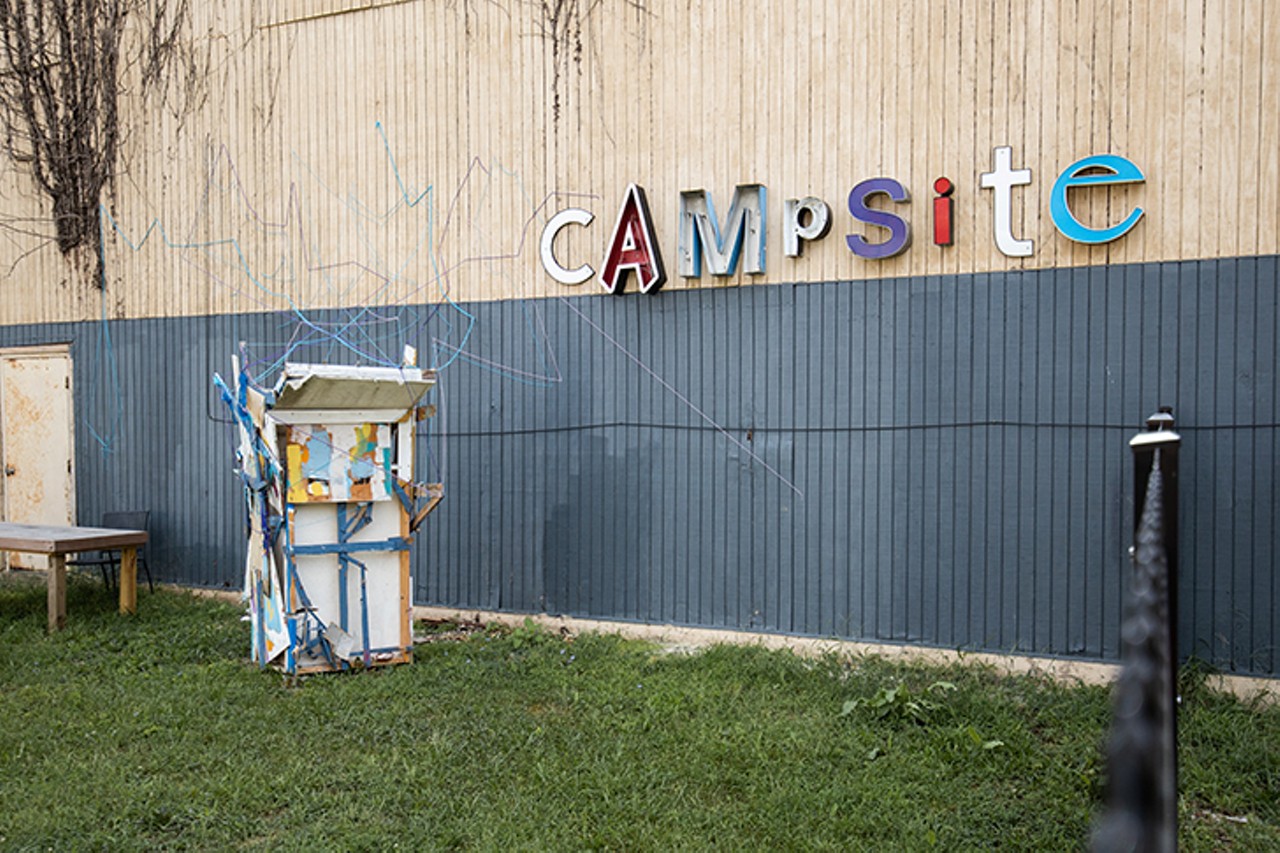
CampSITE Sculpture Park
2866 Colerain Ave., @campsitesculptureparkThe latest addition to the artistic stakeholders rising up in Camp is CampSITE Sculpture Park, a relatively self-explanatory outdoor experience. The ethos of CampSITE, founded by Sean Mullaney and Lacey Haslam, is one of good-natured irreverence, tempered by an earnest desire for connection — and a fierce belief that Camp is a singular place. Traipse through CampSITE today and you’ll spot the shell of a vintage car hanging off the wall of an adjacent building; a massive tree trunk ring with the center burned out, fashioned to resemble a guitar; a few leftover glitter rocks from a community project; a fire pit; and a refurbished Airstream that houses Haslam’s personal project, the Archive of Creative Culture, described as “a living collection of books sourced from the personal libraries today's arts leaders.”
Photo: Hailey Bollinger
8 of 16
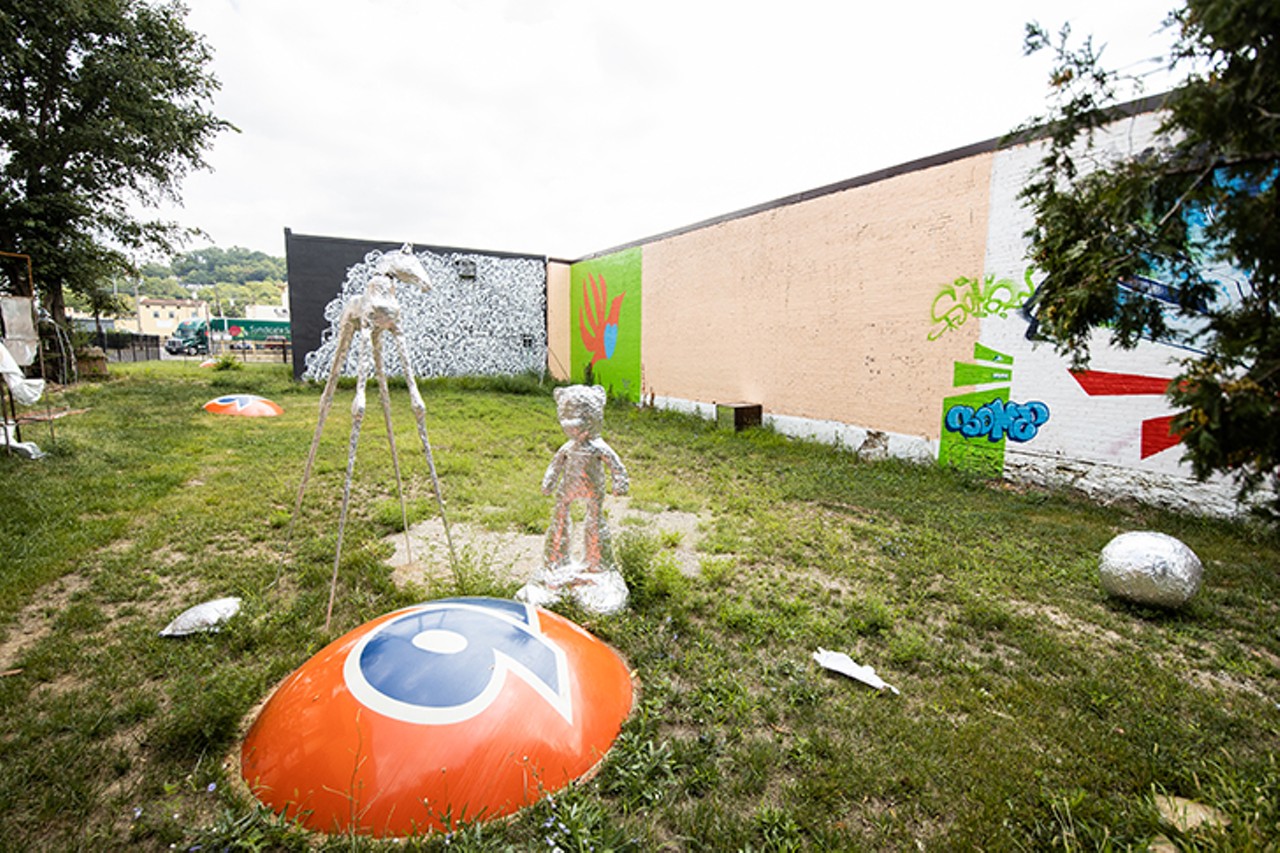
9 of 16

The FRINGE Bookshop
2931 Jessamine St.The FRINGE bookshop is the brainchild of Andrew McKinley, who first came to the area from San Francisco as an artist in residence at Wave Pool two years ago. He stayed there for about a month and turned the downstairs gallery into a bookstore/community living room. Christened “The Gathering Space,” it was a hit. McKinley decided to make Cincinnati his new home and bought a house across the street from Wave Pool. With their help — and an ArtsWave grant — he transformed his shed into a colorful bookstand. Pulling from his own collection of books and texts, FRINGE customers can expect to sift through an array of works that relate to “inclusion, equality and equity” — specifically ones that speak to the LGBTQI community. FRINGE was originally slated to close on June 1 — or at least it finished out its Wave Pool-programmed run then — but McKinley still has it open each Saturday for passersby to peruse the window shelving and outside tables, with additional hours for special events and readings.
Photo: Provided
10 of 16

Camp Washington Urban Farm
3220 Colerain Ave., facebook.com/cwurbanfarmThe folks at Camp Washington Urban Farm have been feeding their neighbors with the fresh produce grown here since 2012. A small army of about 300 volunteers a season plant, tend and harvest everything from tomatoes, peppers, squash, radishes and fruit trees to herbs, kale, spinach, cabbage and bok choy. Once harvested, fresh fruits, vegetables and greens are loaded onto a miniature teardrop Airstream trailer, hooked up to a tandem bicycle and carted around the neighborhood to be handed out for free. The cart, called Camp Washington Art and Mobile Produce (CAMP for short), is a partnership with Wave Pool and volunteers bring arts and crafts activities along with fresh produce. The farm aims to give away 1,500 pounds of produce every year. Farm Manager Aziza Love (also of local Hip Hop group Triiibe) is focused on building more opportunities for community members by hosting gardening and cooking classes as well as creating space for neighborhood events and live music.
Photo: Provided by Camp Washington Community Board
11 of 16
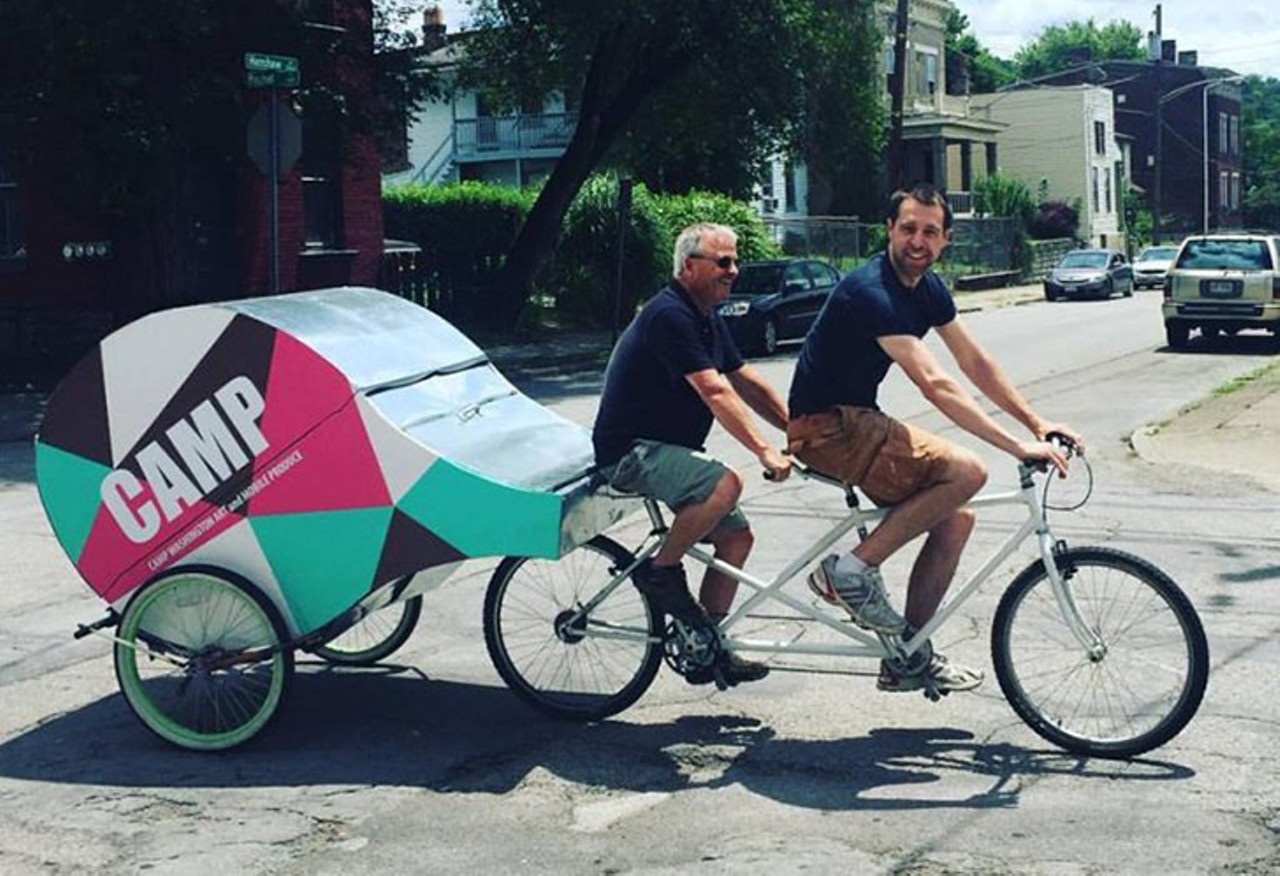
Camp Washington Urban Farm
3220 Colerain Ave., facebook.com/cwurbanfarmThe Camp Washington Urban Farm Camp Washington Art and Mobile Produce (CAMP for short) cart.
Photo: Provided by Wave Pool
12 of 16
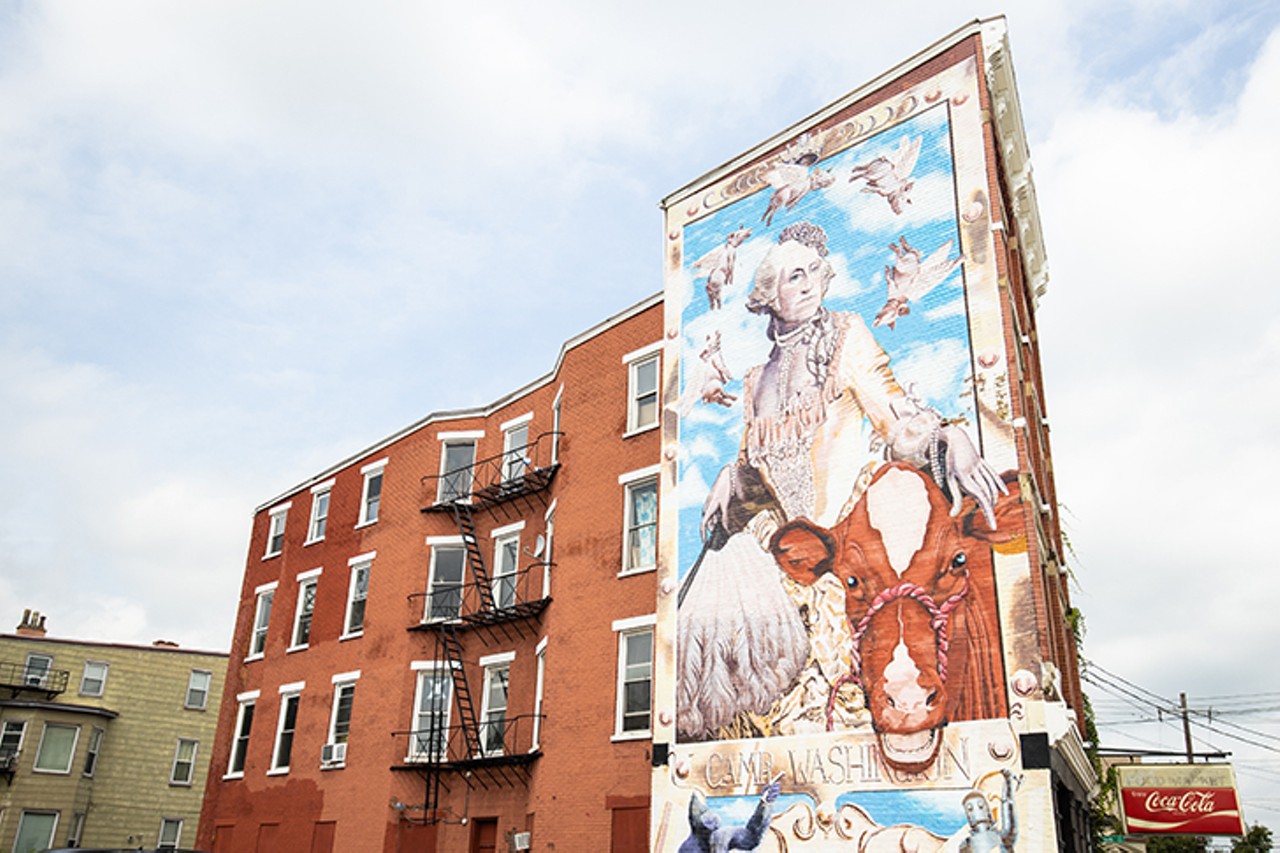
ArtWorks' "Campy Washington" Mural
3025 Colerain Ave., artworkscincinnati.orgOrganized like a painting in a frame, this mural features George Washington in drag — a campy sensibility — with a decorative hat, rouged cheeks, a big pearl necklace and a ruffled yellow dress with a low bust line revealing a hint of cleavage. The references to the neighborhood's businesses — past and present — are unmistakable. Washington is wearing an outfit like one from the nearby costume shop on Colerain that has a gorilla on its front faade. The pigs and cow are references to the stockyards and meatpacking plants once along Spring Grove Avenue.
Photo: Hailey Bollinger
13 of 16

Sunny Blu Coffee
2869 Colerain Ave., facebook.com/sunnyblucoffeehouseOne of Camp's first coffeehouse's, Sunny Blue opened this past spring serving lattes, pastries, breakfast sandwiches and more, with a focus on showcasing local art.
Photo: Hailey Bollinger
14 of 16
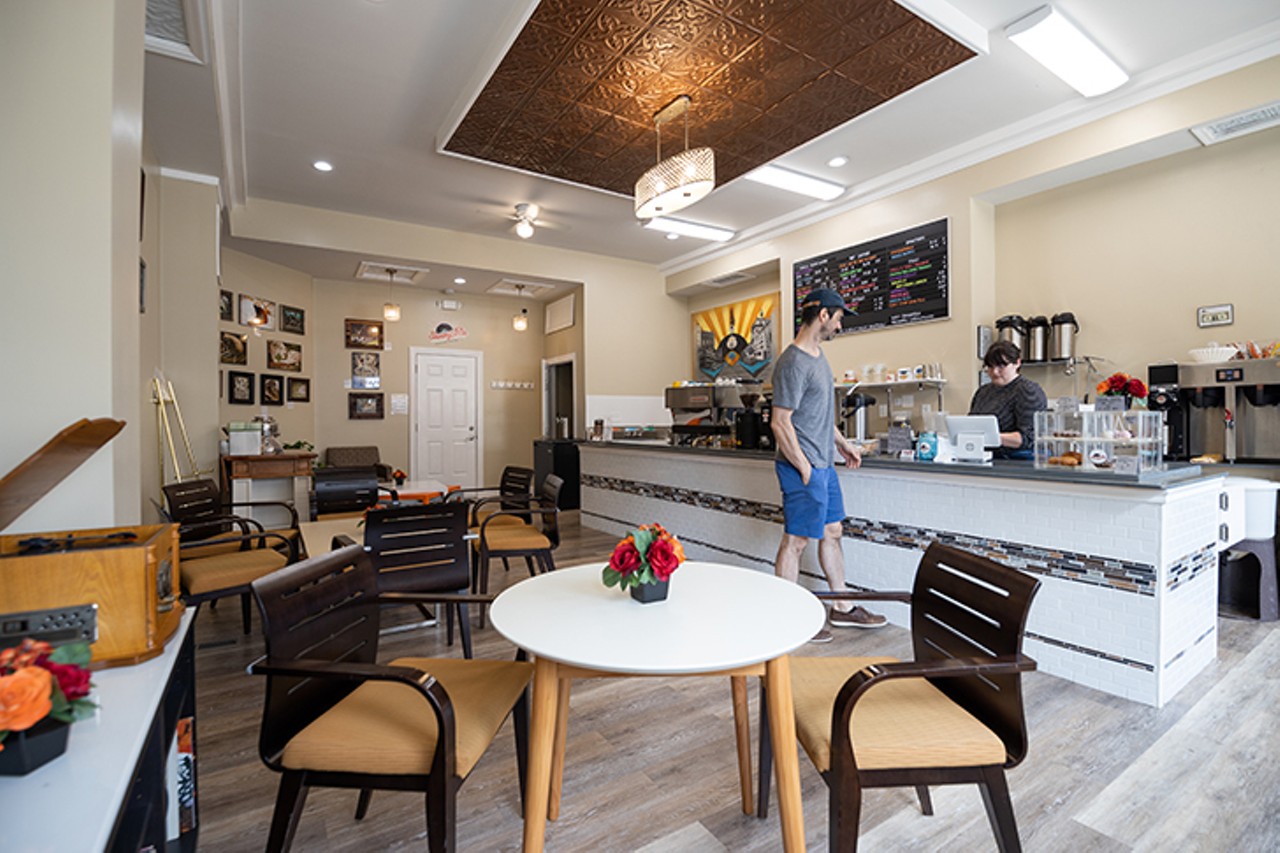
15 of 16
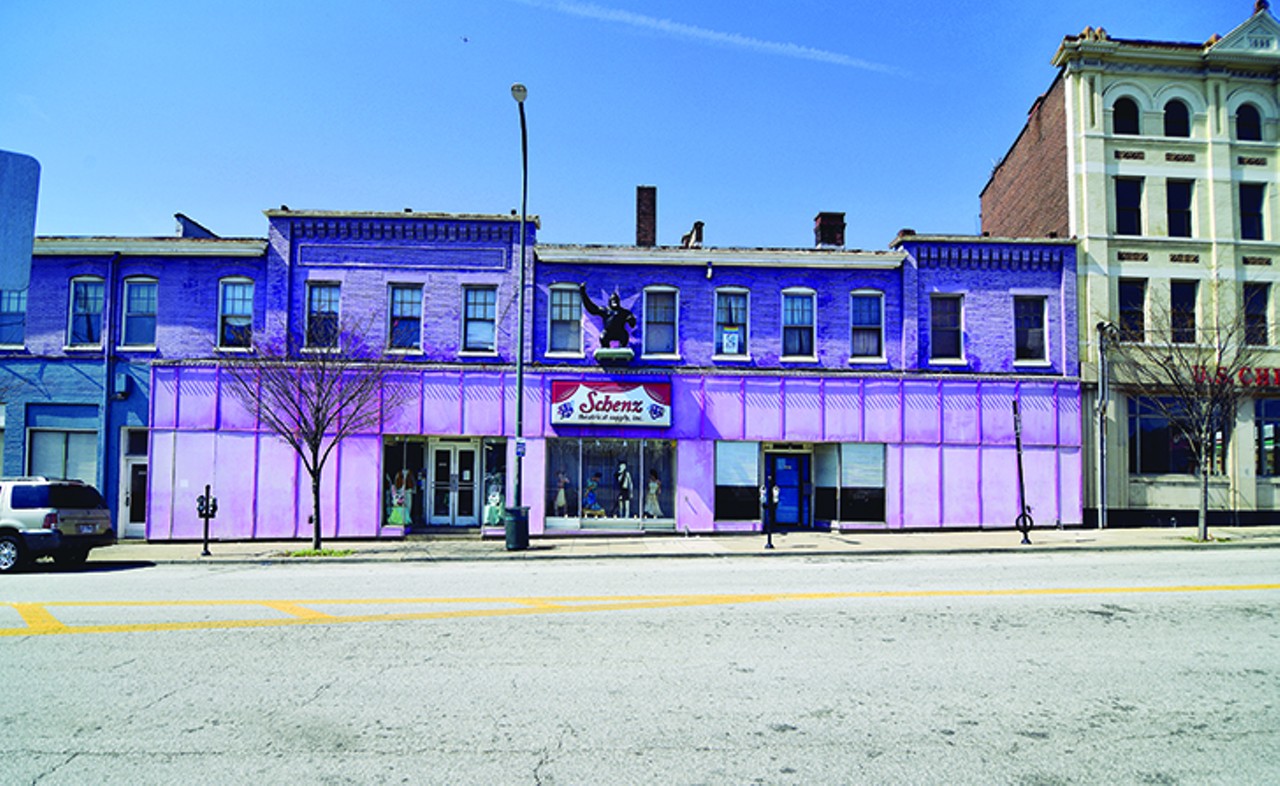
Schenz Theatrical Supply
2959 Colerain Ave., schenz.comSchenz Theatrical Supply in Camp Washington sticks out from the surrounding urban/industrial landscape like a sore thumb. The building’s once-bright purple ombré paint job has faded over time to a pinkish lavender hue. Add a shiny black gorilla — immortalized in the nearby “Campy Washington” ArtWorks mural — emerging above the entrance like King Kong, and it’s impossible not to notice. Inside, customers only see a fraction of Schenz’s full supply: wigs on mannequin heads, theatrical makeup, your standard holiday accessories and several racks of costumes for rent. It’s close quarters and musty for sure, but that adds to the old-school charm. And besides, much more is happening behind the scenes. Schenz Theatrical Supply has been producing costumes, plush mascots and theater wardrobes for nearly 50 years, but the most fascinating character by far is the man behind it all: Jonn Schenz.
Photo: Jesse Fox
16 of 16
Related Slideshows
- Local Cincinnati
- News & Opinion
- Arts & Culture
- Things to Do
- Food & Drink
- Music
- Cincinnati in Pictures
- About City Beat
- About Us
- Advertise
- Contact Us
- Work Here
- Big Lou Holdings, LLC
- Cincinnati CityBeat
- Detroit Metro Times
- Louisville LEO Weekly
- St. Louis Riverfront Times
- Sauce Magazine

